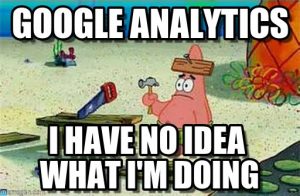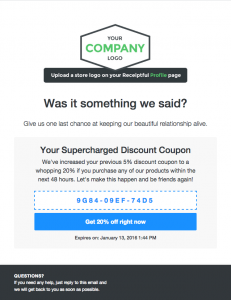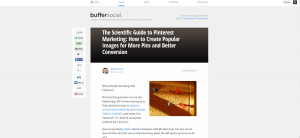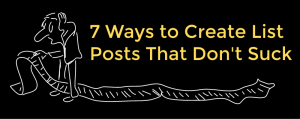How to Make Your Email Marketing Efforts More Successful
Despite the advent of tools like Periscope, Facebook advertising and mobile coupons, email remains a mainstay of digital marketing strategies. Email marketing is still one of the most powerful tools businesses have at their disposal to effectively promote their business and drive revenue.
Don’t believe me? Take a look at these stats:
- The total number of worldwide email accounts is expected to increase to over 4.3 billion accounts by year-end 2016. (Radicati Group)
- 91% of consumers check their email at least one time per day using their smartphone (EmailMonday)
- Email is 40 times more successful at acquiring new customers than Facebook or Twitter (McKinsey and Company)
- For every $ 1 spent on email marketing, the average return on investment is $ 44.25. (ExactTarget)
- Small business owners estimate doing their own email marketing gives them an extra hour in their workday–an hour that is worth $ 273. (Constant Contact)
With those numbers on your side, why would you ignore the power of email? As with most tools, though, the power is only as great as the user. If you are going to use email to market to your customers and prospects, you must know how to use it correctly in order to reap the benefits and capture the ROI.
The Basics of Email Marketing
While there is both science and art to successful email marketing campaigns, the fundamentals are easily mastered. If you are reading this blog, chances are you already have an email account through a service like MailChimp, Constant Contact or even HubSpot.
You have set up email templates and created an email newsletter or product announcement that you send somewhat regularly to your contact list that you have diligently created through online and point-of-sale subscription forms.
From these efforts, you see moderate success and are able to attribute some ROI to your email campaigns. So you continue to send emails to your list, each time hoping for better results that are never quite realized.
You may be on the right track. You are doing the right thing by sending emails, you just may not be sending the right message.
So you have an email list… now what do you do with it?
Oftentimes, clients come to us because they are frustrated by their lack of results from email marketing. They understand enough about marketing to know they should be sending emails, but they don’t understand why they aren’t reaping the same benefits as their colleagues or competitors. Our clients are in the same boat I just described–they are on the right track but are not sending the right messages to their list.
What we see over and over again, especially from our B2C and e-commerce clients, is a lack of nurturing and marketing and an emphasis on sales.
Take this recent client experience, for example:
A retail client recently came to us asking for help. This brick-and-mortar business was looking for ways to leverage their list of several thousand email contacts (collected through online subscription forms and sign-up sheets at the cash register) to increase in-store sales during an upcoming special event.
The client had all the right pieces in place: a sizable list, a paid account with a reputable email service provider giving them access to detailed analytics and reporting, and even a graphic designer who had created beautifully-Photoshopped email headers. All signs pointed to success.
But the problem was the message.
Instead of sending monthly emails of value and substance, such as providing tips on using their products or sharing industry news related to their business, this client only sent emails when there was an in-store sale event or new product to promote. Over time, the open rates and click-through rates were declining, as their customers grew weary of being sold to with each email.
This client is not unique. In fact, this example is rather typical. All too often, businesses just sell, sell, sell through email instead of working to build a relationship of trust and value. If all you do is sell, your audience eventually begins to tune you out, which leads to fewer opens, lower click-through rates, and reduced revenue.
Another potentially harmful side effect of constant selling in your emails is the increased risk of spam. If readers never hear from you except when you are selling something, not only are they more apt to tune you out, but they may be more inclined to mark your email as spam. This can increase your risk of spam rates, which can ultimately hurt your email sender score and make it harder for your emails to get through to the right audiences.
While email is an incredible tool to communicate about a sale or promote a product, it is also an incredible tool to generate conversations with your audience, build relationships and create trust and authority for your brand.
Communicate Value Instead
Unless you have specifically asked your customers and prospects to subscribe to your email list solely to receive promotions and coupons, most likely, people are expecting to receive valuable information from your email communications.
If your subscribers are expecting to receive monthly updates, interesting articles or other educational information, then you can’t just send coupons and product announcements. You must send valuable content if you want to keep your audience engaged.
What, then, defines valuable content?
Well, think about what you like to see as a user.
The irony of life as a marketer can be illustrated with junk mail. As professional marketers is that we spend hours at the office creating beautiful, slick, enticing postcards to mail to our customer lists. We proudly send them off, declaring a successful “direct mail campaign.” When we get home in the evenings, we find our mailboxes teeming with other people’s direct mail campaigns, which we promptly declare to be “junk mail” and throw away.
The same concept applies to your email mailbox.
You likely subscribe to dozens of newsletters, blogs and membership lists, both personally and professionally. Between my two email accounts, I can receive as many as 75 promotional emails in one day. (Maybe I should clean up and focus on the lists that really interest me, but that’s another blog for another time.)
Of these emails, the number I open each day or each week varies depending on:
- the amount of time I have to spend reading email newsletters in a given day
- whether or not the subject line piques my interest
- the company or person sending the email
Of those emails I do open, the ones I spend the most time reading are the ones that continue to provide value. These are the emails I make certain to open and read, regardless of how much time I do or don’t have in my day. In short, the emails I continue to read as a consumer are the emails that continue to prove relevant and interesting in my life.
Your emails should strive to hit this sweet spot for all of your consumers.
In today’s world, nearly 2 out of every 3 customers makes up their mind on what and when to purchase on their own, before they ever pick up the phone or walk into your store. Today’s consumers are dictating the manner in which they want to make a purchase. And they don’t want to be sold to all the time.
Why else are subscription services for radio, television and music streaming so popular? Consumers are willing to fork over their hard-earned income each month to avoid hearing commercials and thereby avoid being sold to.
Some skeptics may wonder how their business is supposed to flourish if you don’t broadcast sales events or promote products. The point is not to quit selling–just quit selling in every. single. email.
Popular social media and marketing expert Gary Vaynerchuk expands upon this topic in his recent book Jab, Jab, Jab, Right Hook, in which he suggests that selling online is best done with three soft asks, or jabs, before the sales pitch, or powerful right hook. Although Vaynerchuk’s book is couched in social media, the concept adapts perfectly well to email.
Planning Your Email Communications
So what do those jabs and hooks look like? How can your business ensure that you are delivering value each time you deliver a marketing email?
Start with a content calendar. You don’t need a sophisticated template or tool, just a 12-month calendar and a pen. Plan out the year as a whole, so that you can identify the timing and themes of your messages. No matter how frequently you plan to send out emails (whether it’s monthly, weekly or just a few times a year), mapping out the themes and messages at once will help you stay on track.
Schedule around events or holidays. If you know your business will hold special events or holiday sales throughout the year, put these dates and events on the calendar first.
Fill in with interesting topics. Balance your sales and promotional emails with interesting emails that offer insight into your company without simply announcing a sale. Just as you would showcase your business’s personality in your store, on your website or on your social media channels, you should showcase your personality in your emails as well. You can introduce your staff, showcase how to use your product or service, discuss activities or events taking place in the community or promote partnerships with other businesses.
Schedule these jabs in accordance with the right hooks, building up to the big asks throughout the year. Remember to think about those emails you enjoy reading as well and model your emails in the same fashion, to resonate with your audience.
By telling a story and providing value in your emails, you are priming your audience to really listen to your message. Then, when the time is right to make an actual sales pitch, your customers are ready to come in and make a purchase instead of tuning you out and deleting without reading.
And, isn’t that the point of email after all?
Digital & Social Articles on Business 2 Community
(140)







